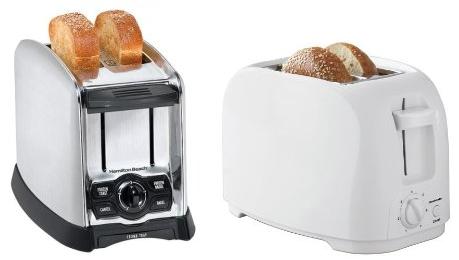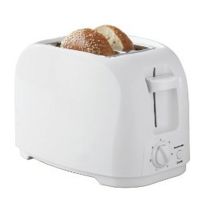Toaster
From DDL Wiki
Contents |
Executive Summary
Stakeholders and Stakeholder needs
Suppliers
Company Owner
Customers/Public
Product Function
Assembly Components
DFMA Analysis
FMEA Analysis
DFE Analysis
Putting a slice of bread in the toaster, one does not often think about the environmental implications this act may have: “What steps were taken to enable this toaster to arrive on my countertop, how much power is it using while toasting, and what will happen to it after it I throw it away?” Delving into the life cycle of a toaster, we see that there is much room for improvement.
The key element in the life cycle of this appliance is energy. Being made of nearly completely recyclable materials, we are not focusing on the post-use phase. In both the production and use phases of a toaster, power generation and supply is the overwhelming contributor of greenhouse gas emissions. This seems fairly straightforward for the use end – in use, toasters produce little more than heat, from electrical power, and (hopefully) golden brown toast – but this may come as a surprise for the manufacturing end. Indeed, power generation and supply produces nearly four times as much CO2-equivalent than the nearest sectors, truck transportation and steel mills, during the manufacturing of such appliances.
Using the EIO-LCA software from Carnegie Mellon University’s Green Design Institute, we see that every $1,000,000 of production in the ‘Electric housewares and household fans’ sector produces 611 MTCO2E. Given our $10 toaster, this shows us that approximately 0.006 MTCO2E caused by the manufacturing of one toaster. To compare that to the use end, a simple calculation is done:
From the EIO-LCA, we see that for every $1,000,000 of production in the ‘Power generation and supply’ sector, 9910 MTCO2E are emitted.
Assuming: $0.10/kWh electricity cost, power consumption is 800W, usage is 6 min (0.1hr) per day, used 300 days out of the year, over the course of a 4 year use-life. We see that it would cost approximately $9.60 to run this toaster over the course of its life. Given this information, it is seen that the use phase of a toaster’s life emits approximately 0.095 MTCO2E. This is an entire order of magnitude higher than the emissions production phase. Clearly, one of our assumptions, above, needs to be modified. The only option which may not impact the functionality and longevity of the toaster is the power consumption.
The results for conventional air pollutants, such as SO2, NOx, and CO, show the same result: power generation, both for the creation and use of a toaster, is the largest contributor to harmful emissions.
Furthermore, looking at other toasters, we see that this 800W usage is on the low end of the spectrum. All residential toasters use the same heating method – running current through a filament, which generates heat. Perhaps a thorough rethinking of the method used to toast the bread is necessary.
The numerical results of GHG emissions, above, come with a good level of confidence. Though there are many sub-sectors of the ‘Electric housewares and household fans’ segment, the ‘Small electric household cooking appliances’ sub-sector represents nearly 1/3 of the overall sector.
Mechanical Analysis
References
Degentesh, Drew. "Metal Processing." 24-443: Design for Manufacture. Carnegie Mellon University. 11 Sept. 2008.
Degentesh, Drew. "Injection Molding." 24-443: Design for Manufacture. Carnegie Mellon University. 4 Sept. 2008.
Degentesh, Drew. "Plastics Processing." 24-443: Design for Manufacture. Carnegie Mellon University. 2 Sept. 2008.
DFM Textbook (will be updated)
























